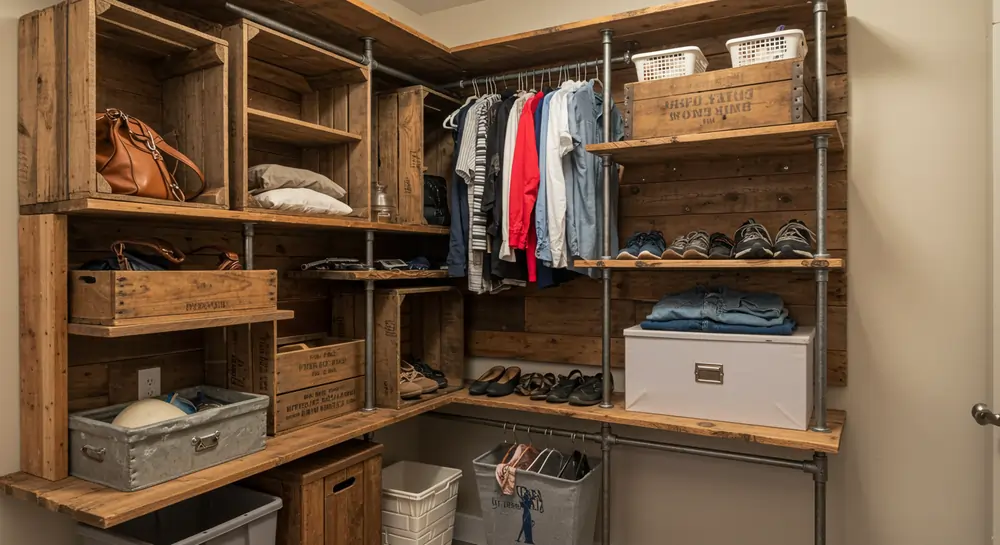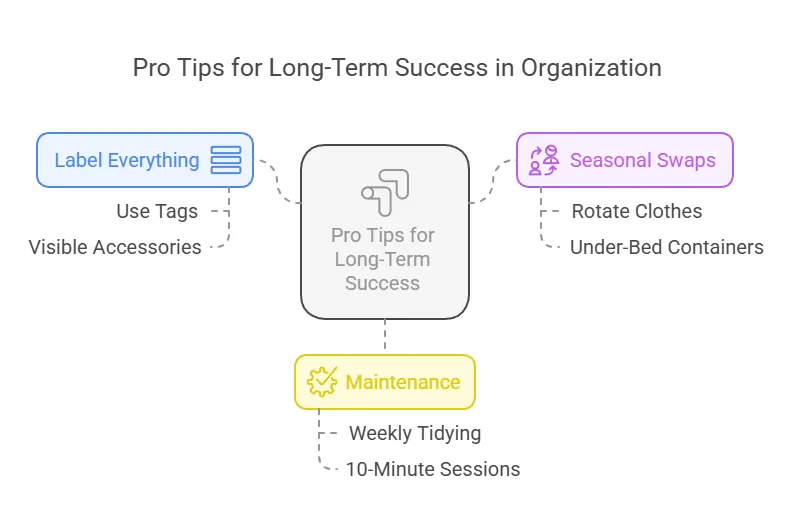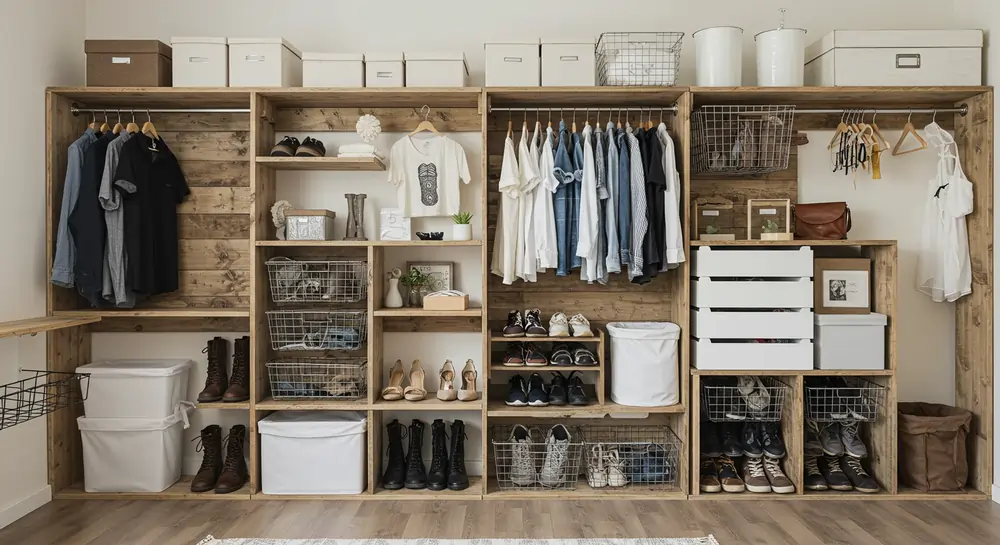Transform your cluttered closet into a dreamy, organized oasis with these expert-backed tips, step-by-step instructions, and smart design hacks.
Why DIY Closet Systems Are the Secret to a Stress-Free Morning
Let’s face it: a messy closet can turn your morning routine into a chaotic scavenger hunt. But what if you could design a closet organization system that’s tailored to your lifestyle, budget, and space? Enter DIY closet systems—a game-changer for anyone craving order without breaking the bank. Whether you’re tackling a reach-in closet or dreaming of a custom walk-in, this guide will walk you through everything from affordable solutions to upscale finishes.
The DIY Advantage: Custom Design Meets Budget-Friendly Smarts

Why spend thousands on a contractor when you can create a functional and durable system yourself? DIY projects empower you to:
- Maximize available space with adjustable shelves and drawers.
- Choose materials that match your style, from rustic plywood to sleek wire racks.
- Assemble systems that grow with your needs, thanks to modular components.
For example, IKEA’s PAX system offers customizable frames that adapt to shaped closets, while EasyClosets provides step-by-step instructions for built-in designs.
1. Save Money Without Sacrificing Style
DIY projects are inherently affordable because you’re bypassing labor costs and markup. For example, a modular kit from IKEA or Home Depot starts at 200, while a built − in system from Easy Closets ranges from 800–2,500. Compare that to pro installations, which often hit 150–$300 per linear foot.
| Aspect | DIY Closet System | Professional Installation |
|---|---|---|
| Cost | 200–2,500 (materials only) | 2,000–10,000+ |
| Customization | Fully customizable (mix shelves, drawers, racks) | Limited to designer’s catalog |
| Timeline | 1–3 days (perfect for weekend projects) | 2–6 weeks (waiting for contractors) |
| Control | Adjust layout, materials, and finish as you go | Dependent on third parties |
Not only does DIY save cash, but it also lets you splurge on luxe accessories like velvet-lined drawers or brass knobs without guilt.
2. Design a System That Actually Works for You
Ever struggled to reach a basket on a high shelf or tripped over a container of off-season clothes? DIY closet systems solve these headaches by letting you tailor every component to your daily use.
- Maximize odd-shaped closets: Use adjustable shelves and rods to fit angled walls or sloped ceilings.
- Prioritize accessibility: Place frequently used clothing at eye level and seasonal items higher up.
- Mix and match storage: Pair wire racks for shoes with plywood drawers for delicate sweaters.
Brands like IKEA PAX and Elfa offer modular designs that grow with your needs. For instance, you can start with basic closet shelving and later add drawers or a pull-out rack for ties and belts.
3. Choose Durable, Sustainable Materials
When you DIY, you control the materials—no cheap particleboard or flimsy wire here. Opt for plywood or solid wood for shelves that won’t sag under heavy sweaters, or try metal brackets for industrial stability.
Pro tip: Eco-friendly options like bamboo or reclaimed wood are rising in popularity. Check out Home Depot’s sustainable closet solutions for ideas.
4. No Expertise? No Problem!
Worried you’re not a builder? Most DIY closet systems come with step-by-step instructions and pre-drilled holes for easy installation. Brands like EasyClosets even provide online design tools to help you map your layout based on accurate measurements.
For hands-on learners, YouTube is a goldmine. Channels like DIY Danielle break down complex tasks, like cutting plywood to dimensions or installing drawer slides, into bite-sized videos.
5. Adapt Over Time (Because Life Changes)
A freestanding closet system isn’t just affordable—it’s flexible. Moving? Redecorating? Simply disassemble your modular unit and rebuild it in your new bedroom.
- Add components: Install a pull-out hamper or jewelry tray later.
- Adjust heights: Lower rods for kids’ closets or raise them as they grow.
- Swap finishes: Refresh with a coat of paint or new hardware.
Read Also https://ahouseinthevalley.com/green-sectional-couch/
Planning Your DIY Closet: Measure Twice, Build Once
Before grabbing your drill, start with accurate measurements. Use a tape to note your closet’s dimensions—width, length, and height—and sketch a layout that prioritizes daily use. Pro tip: Leave 12–14 inches of rod height for hanging clothes and 16–18 inches for shelves.
Key Tools & Materials
- Circular saw or table saw for cutting wood or plywood.
- Brackets and hardware for stability.
- Baskets and containers to corral accessories.
For small bedrooms, freestanding closet units like the ELFA system offer easy installation without permanent changes.
Step-by-Step Instructions: Building Your Dream Closet
- Declutter First: Empty your closet and sort items into “keep,” “donate,” and “toss” piles.
- Frame It: Build a wood frame using studs and drywall, securing it to wall studs for stability.
- Install Shelving: Cut plywood panels to size, sand edges, and mount with brackets.
- Add Drawers & Rods: Use drawer slides for smooth operation and closet rods for hanging.
- Finishing Touches: Paint with low-VOC finishes or add knobs for flair.
For visual learners, YouTube tutorials like this one break down complex steps into bite-sized tasks.
Modular vs. Built-In: Which System Wins?
Here’s a quick comparison to help you decide:
| Feature | Modular (IKEA, EasyClosets) | Built-In (Custom Design) |
|---|---|---|
| Cost | 200–800 (budget-friendly) | $1,500+ (high-end materials) |
| Customization | Adjustable shelves, mix-and-match | Tailored to exact dimensions |
| Installation | DIY-friendly, no contractor needed | May require professional help |
| Durability | Good for light to moderate use | Heavy-duty, long-lasting |
Modular systems shine in reach-in closets, while built-in designs suit walk-ins with unique layouts.
Design Trends for 2025: Smart, Sustainable, and Stylish
- Eco-Friendly Materials: Reclaimed wood and bamboo shelves reduce environmental impact.
- Smart Lighting: Motion-activated LEDs or Ketra systems add luxury.
- Multi-Functional Zones: Add a vanity or seating for a boutique vibe.
For a trendy twist, try natural stone accents or plaster moldings to elevate basic closet shelving.
Pro Tips for Long-Term Success

- Label Everything: Use tags on baskets to keep accessories visible.
- Seasonal Swaps: Rotate clothes using containers under the bed.
- Maintenance: Spend 10 minutes weekly tidying up—it’s easier than a marathon session!
Final Thoughts: Your Closet, Your Rules
A DIY closet system isn’t just about organization—it’s about crafting a space that reflects you. Whether you opt for IKEA hacks or a custom design, the key is to prioritize efficiency and joy. Ready to start? Grab your tape measure, fire up a YouTube guide, and transform that chaotic bedroom corner into a sanctuary.
Got questions? Drop them below—we’re here to help!
FAQs
What are the benefits of building a DIY closet system?
Building a DIY closet organizer offers numerous advantages. Firstly, it’s a cost-effective solution compared to hiring a professional designer or purchasing pre-made systems. You can customize the storage to fit your specific needs and closet space. DIY projects also allow for greater flexibility in design and materials. Moreover, creating your own organizer can be a rewarding experience, giving you a sense of accomplishment and allowing you to develop new skills. You’ll have complete control over the arrangement and accessibility of your belongings, making your closet more efficient and organizational.
What tools and materials do I need for a DIY closet system?
To build a DIY closet organizer, you’ll need some basic tools and materials. Essential tools include a drill, level, tape measure, stud finder, and saw. For materials, you’ll need wood boards, screws, brackets, and hanging rods. Depending on your design, you might also need furniture-grade plywood, laminate, or melamine boards. Don’t forget about hardware like drawer slides, door hinges, and knobs. Many DIY closet organizer kits are available at stores like Home Depot, which can simplify the process by providing pre-cut pieces and necessary hardware. The specific materials will vary based on your chosen design and the size of your closet space.
How do I measure my closet for a DIY system?
Accurate measurements are crucial for a successful DIY closet organizer. Start by measuring the width of your closet from wall to wall. Then, measure the height from floor to ceiling, and the depth from the back wall to the door frame. Don’t forget to account for any baseboards or crown molding.

